
Pesticides and World Covid-19 Deaths
*Corresponding Author(s):
Craven JSIndustrial Experience In Engineering, Design, Manufacture, Research, United States
Email:jcraven@zoominternet.net
Abstract
In July 2021 at the time the World registered 3.5 million coronavirus deaths, the author completed and in depth evaluation of the relationship of pesticide use by country and the regions of coronavirus deaths and concluded that pesticide use was a major pollutant involved in creating high death rank regions. Ample evidence was presented showing that pesticide use, sprayed or ingested, was involved. Pesticides are well known to be toxic to humans. In 2017 United Nations released a sponsored a study, which indicated that 200,000 deaths a year occurred due to the use of pesticides worldwide, and that the primary people affected were farmers, particularly in the Global South. This paper updates the author’s earlier evaluation at the milestone of six million World coronavirus deaths to determine if the outcome has changed.
Introduction
This paper is a follow-up to the evaluation conducted from April 2020 through December 2021 on the “World’s Coronavirus Death Regions and Why” (Craven, 2021). The full evaluation, based on a 20 month data analysis of World coronavirus deaths recorded by the Worldometer [1], as power point presentations in a WordPress.com website created November 2021. Part 4 of that evaluation, completed at the 3.5 million Covid-19 death milestone, determined that the vast majority [2] occurred in countries using the most pesticides.
Pesticide producers [3] emphasize that pesticides play an important role in (a) ensuring the people of the World’s good health and well-being, (b) protecting vital and economically important food resources, (c) protecting crops from threats of disease and other health hazards, (d) providing the right environment for farmers to earn a sustainable livelihood by minimizing damage and crop loss, (e) preventing mass epidemics in crops, allowing for sustainable healthy food stocks to feed expanding global population. World population [4] has exploded from one billion in 1800 to two billion in 1930 to greater than 7.9 billion March 2022.
A United Nations study ([5] DuVall) estimated that 200,000 World deaths per year resulted from pesticide usage. An article in Nature in January 2022 ([6] Adam, Karlinsky, Kobak) provided a legitimate basis that “The Pandemics True Death Toll: Millions More Than Official Counts” is more likely in range 12-22 million.
This paper focuses on the connection between World pesticide usage and its relationship to the World’s coronavirus deaths at the six million registered death milestone and considers the implication of magnitude of Covid-19 deaths vs pesticide use at the more realistic 12-22 million.
Discussion
In February 2022, Craven authored a paper entitled East-Central Europe – World’s Deadliest Coronavirus Center [7] and in March 2022 another paper entitled Lands Abutting Seas and Oceans, 85% of Covid-19 Deaths [8]. Both of these published papers updated the data evaluation at the six million death milestone, reached on March 3, 2022 and emphasized the role of fine sized pollutants from a variety of sources under temperature inversion conditions as carriers of coronavirus aerosols as the principal mechanism for the transmission of coronavirus among people [9,10]. Pesticide use primarily from spraying, but also from consumption from crops with residual pesticides, and pesticide runoff from agricultural lands into water bodies was cited as playing a significant role in creating coronavirus death regions.
Table 1 summarizes the eight coronavirus death regions, cited in these papers, which account for 99.8% of the World’s deaths. Eastern Europe was the Region with highest death rank, with South America a close second. Death ranks in Africa and the Far East remained at 5% of Eastern Europe and South America.
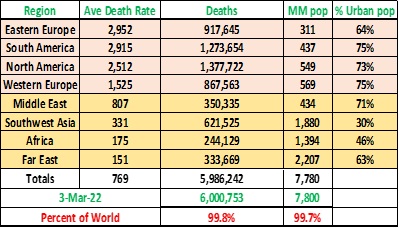 Table 1: Total Covid-19 Pandemic Deaths, Death Racks, Population by Region – March 3, 2022 [2].
Table 1: Total Covid-19 Pandemic Deaths, Death Racks, Population by Region – March 3, 2022 [2].
Table 2 summarizes total coronavirus deaths, death ranks, and accumulated percent of World deaths for the forty-two deadliest coronavirus countries, 90% of pandemic deaths on March 3, 2022. The deaths in these countries descended from near one million in the USA to near 20,000 in Myanmar. Ninety countries of the 224 tracked by Worldometer Coronavirus had over 4,000 deaths, and accounted for 98% of the World’s total. Twenty-one countries accounted for 80% of the total. Six countries accounted for 50% of the World’s deaths- USA, Brazil, India, Russia, Mexico, and Peru. The pandemic is world-wide, but the bulk of coronavirus deaths are concentrated into narrow regions of the World.
|
Rank |
Country |
Deaths |
Death Rate |
Acc vs World |
|
|
1 |
USA |
981729 |
2937 |
16% |
|
|
2 |
Brazil |
650646 |
3025 |
27% |
|
|
3 |
India |
514620 |
367 |
36% |
|
|
4 |
Russia |
354011 |
2424 |
42% |
|
|
5 |
Mexico |
318835 |
2430 |
47% |
|
|
6 |
Peru |
210851 |
6250 |
51% |
|
|
7 |
UK |
161898 |
2364 |
53% |
|
|
8 |
Italy |
155399 |
2577 |
56% |
|
|
9 |
Indonesia |
143361 |
517 |
58% |
|
|
10 |
France |
138942 |
2121 |
60% |
|
|
11 |
Colombia |
138939 |
2683 |
63% |
|
|
12 |
Iran |
137439 |
1602 |
65% |
|
|
13 |
Argentina |
126531 |
2757 |
67% |
|
|
14 |
Germany |
124265 |
1475 |
69% |
|
|
15 |
Poland |
112130 |
2968 |
71% |
|
|
16 |
Ukraine |
105505 |
2437 |
73% |
|
|
17 |
Spain |
100239 |
2143 |
75% |
|
|
18 |
So Africa |
99499 |
1643 |
76% |
|
|
19 |
Turkey |
95025 |
1107 |
78% |
|
|
20 |
Romania |
63782 |
3353 |
79% |
|
|
21 |
Philippines |
56538 |
505 |
80% |
|
|
22 |
Chile |
42683 |
2201 |
81% |
|
|
23 |
Hungary |
42211 |
4596 |
81% |
|
|
24 |
Vietnam |
40547 |
410 |
82% |
|
|
25 |
Czechia |
38787 |
3611 |
83% |
|
|
26 |
Canada |
36843 |
962 |
83% |
|
|
27 |
Bulgaria |
35716 |
5205 |
84% |
|
|
28 |
Equador |
35264 |
1949 |
84% |
|
|
29 |
Malaysia |
33028 |
999 |
85% |
|
|
30 |
Pakistan |
30237 |
133 |
85% |
|
|
31 |
Belgium |
30217 |
2588 |
86% |
|
|
32 |
Bangladesh |
29058 |
174 |
86% |
|
|
33 |
Tunisia |
27857 |
2317 |
87% |
|
|
34 |
Greece |
26036 |
2518 |
87% |
|
|
35 |
Iraq |
25028 |
600 |
88% |
|
|
36 |
Egypt |
24149 |
229 |
88% |
|
|
37 |
Japan |
24092 |
191 |
89% |
|
|
38 |
Thailand |
23073 |
329 |
89% |
|
|
39 |
Netherlands |
21589 |
1255 |
89% |
|
|
40 |
Bolivia |
21433 |
1796 |
90% |
|
|
41 |
Portugal |
21141 |
2083 |
90% |
|
|
42 |
Myanmar |
19379 |
352 |
90%
|
|
Table 2: Total Covid-19 Pandemic Deaths, Death Rates, Accumulative by Country – March 3, 2022.
The earlier evaluation [2] proposed the hypothesis that a “Pathway to Creation of Deadly Coronavirus Regions” existed. This Pathway is shown on Figure 1 and is fundamental to this paper. Critical factors affecting coronavirus deaths identified in the initial evaluation (Craven, 2021) were (a) massive emissions of pollution from a variety of well-known sources (refineries, coal-powered generation, diesel transportation land and sea, pesticides spraying, consumption, runoff) in (b) congested regions of population under (c) meteorogical weather conditions of temperature inversions.
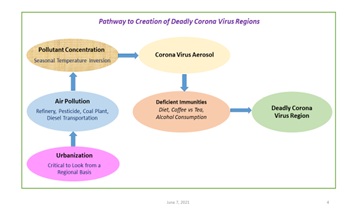 Figure 1: Pathway to Creation of Deadly Coronavirus Regions.
Figure 1: Pathway to Creation of Deadly Coronavirus Regions.
In Part 1 of the evaluation [2], it was determined that spraying of pesticides in North Dakota (Minnesota, Florida et al) were known to cause pollution and health issues, and could result in particulates drifting hundreds of miles. US States stringently regulate spraying vs periods of temperature inversions.
In Part 4 of the evaluation [2], the explosion of coronavirus deaths in Mexico and South America prompted the author to focus on pesticide usage as a potential cause. The following considerations led to this evaluation.
- From the end of March through the first week of June 2021, major changes in coronavirus death occurred in Mexico and South America. Mexico acknowledged underreporting deaths by 120,000; Peru acknowledged underreporting by 113,000; Colombia passed Germany in total deaths; Argentina passed Spain and Iran in total deaths.
- Pesticide use was considered across Mexico and South America as large quantities of coffee and fruits are grown and exported to the USA and elsewhere.
- Research of the growing conditions determined that coffee and fruits are generally grown on mountain sides to take advantage of the warmer temperatures caused by temperature inversions. Research further determined that this applies to grape growers and wine producers in Italy, France, and Spain.
- The population centers are located in the mountain valleys below the temperature inversions, and these centers have extensive manufacturing and resulting pollution.
- Temperature inversions are seasonal, peculiar to each region, and are well known to concentrate pollutants. Based on the literature associated with pesticide spraying, temperature inversions occur during more or less specific time periods during the day. Timing for spraying is critical to avoid “drift” hundreds of miles.
Figure 2 is a map of the Global Pesticide Use [11] by the United Nations Food and Agricultural Organization (FAO). The World’s countries are shaded in increasing darker green in proportion to their increased average pesticide application per unit of cropland, measured in kilograms per hectare. Comparison of the World Covid-19 deaths in Tables 1 and 2 with the World’s Global Pesticide Use by Country indicates that essentially all of the Covid-19 deaths have occurred in these pesticide using countries. The mainland continent of Africa and Asian Russia are shown to use very little pesticides and have very few COVID-19 deaths. North America and South America, heavy pesticide users, account for 44% of the World’s Covid-19 Deaths. Europe plus the Northern Africa countries surrounding the Mediterranean Sea account for 30%. The Middle East plus Southwest Asia, bounded by the Black Sea and Arabian Sea, account for 16%. The Far East (South China Sea and East China Sea), South Africa (Atlantic and Indian Oceans) and Australia (an island) account for 7%. This totals to 97% of the World’s Covid-19 deaths. China is the heaviest pesticide using Country as well as a heavy industrial polluting country, but reports very few Covid-19 [2] deaths. It is beyond the scope of this paper to second guess reported data.
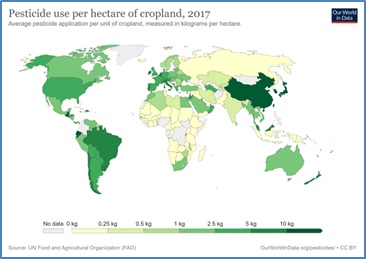 Figure 2: Global Pesticide Use, UN Food and Agricultural Organization (FAO).
Figure 2: Global Pesticide Use, UN Food and Agricultural Organization (FAO).
However, in January 2022, in an article in [11] Nature “The pandemic’s true death toll: millions more than official counts” David Adam in reviewing work by Karlinsky and Kobak, projected based on “Excess World Deaths” during the pandemic, that the actual Covid-19 death toll is likely in the range of 12 to 22 million vs the recorded 6 million. Figure 3 is taken from that report. It focuses on 10 Countries. The article further addresses India’s actual death toll as 5-10x their 515,000 total reported on March 3, 2022 and has a goal in the future to fully assess the actual death numbers in China. Comparing these countries to the map of Global Pesticide Use and to this paper’s assessment that 97% Covid-19 deaths are in countries using most pesticides, means that the actual number of Covid-19 deaths related to pesticide usage World-wide may be tens of millions.
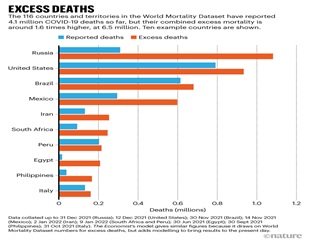 Figure 3: Excess Pandemic Deaths based on World Mortality Dataset.
Figure 3: Excess Pandemic Deaths based on World Mortality Dataset.
A search for articles relating Covid-19 deaths to pesticide exposure provided an article [12] on Pesticide Exposure and Covid-19 Susceptibility (Lamontagne, 2021) identified a potential link between exposure to organophosphates and increased susceptibility to Covid-19 infection. This work focused on veterans of The Gulf War, 25% of whom suffer from chronic symptoms of fatigue, headaches, joint pain, indigestion, insomnia, dizziness, respiratory disorders, and memory problems. Saurabh Chatterjee, PhD, of University of South Carolina and research health specialist at Columbia VA Medical Center led research team.
A second article from Beyond Pesticides [13] “Much Higher Rates of Covid-19 Infections and Deaths in Farm Workers and Landscapers, May Be Enhanced by Pesticide Exposure” provided the following:
“According to a report published by the University of California Los Angeles, Latino Californians aged 50 to 64 have died from the virus at rate five times higher than white people of the same age. The poor working conditions farmworkers and landscapers are subject to already put them at disproportionate risk of pesticide induced diseases. Alongside other hardships such preexisting health problems, family obligations, cramped housing and transportation, threat of deportation, and communication difficulties, the risks of these essential workers contracting and dying from Covid-19 are compounded exponentially.”
Appendix A provides an article entitled “Pesticides – General” by the [14] Canadian Centre for Occupational Health & Safety, Pesticides General OSH Answers. It identifies dozens of pesticides in use, characterizes them by chemistry, explains hazards, and states “With a few exceptions, most are highly toxic” to humans because “pesticides are designed to ‘kill’”.
Appendix B provides a mandated annual communication by the Maryland Department of Agriculture from the author’s Lawn, Tree and Shrub Care provider [19]. Forty-one pesticides are listed with their associated Precautionary Statements and Environmental Hazards. The author challenges all readers to fully read and ponder the facts of Appendices A & B.
Figure 4 provides a table and graph of “Highest Pesticide Consumption & Sales” for the World and for Europe. For each the coronavirus death rank for each country has been added. Nine of the ten highest World pesticide consumers are in the top 42 deadliest coronavirus countries. The anomaly is China. For Europe seven of the eight highest countries in pesticide sales are in the top 23 deadliest coronavirus countries.
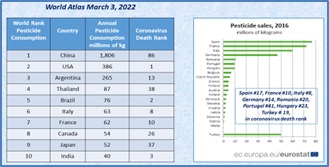 Figure 4: Highest Pesticide Consumption & Sales vs Coronavirus Death Rank.
Figure 4: Highest Pesticide Consumption & Sales vs Coronavirus Death Rank.
Figure 5 is a Global map of countries by Soybean production in 2016. Table 3 provides the thirteen World Countries producing over one million Soybean tonnes in 2018. Their corresponding coronavirus death rank has been added to Table 3. All of these countries are in the top 44 deadliest coronavirus countries except China and Uruguay. Brazil, USA, India are top five in soybean production and coronavirus deaths.
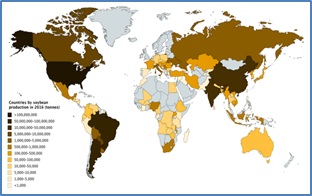 Figure 5: Countries by Soybean Production 2016 tonnes.
Figure 5: Countries by Soybean Production 2016 tonnes.
|
Rank |
Country |
2018 |
Covid-19 Death Rank |
|
1 |
125,887,672 |
2 |
|
|
2 |
123,664,230 |
1 |
|
|
3 |
37,787,927 |
13 |
|
|
4 |
14,193,621 |
86 |
|
|
5 |
13,786,000 |
3 |
|
|
6 |
11,045,971 |
44 |
|
|
7 |
7,266,600 |
26 |
|
|
8 |
4,460,770 |
16 |
|
|
9 |
4,026,850 |
4 |
|
|
10 |
2,942,131 |
40 |
|
|
11 |
1,540,000 |
18 |
|
|
12 |
1,334,000 |
73 |
|
|
13 |
1,138,993 |
8 |
Table 3: Soybean Production by Country vs Covid-19 Death Rank.
Table 4 provides a summary of the top sixteen Worlds wheat producing countries, although first on list is European Union (27 countries). Fourteen of these listed entities are in the top 41 deadliest coronavirus countries. Exceptions are Kazakhstan at #55 and Australia at #82.
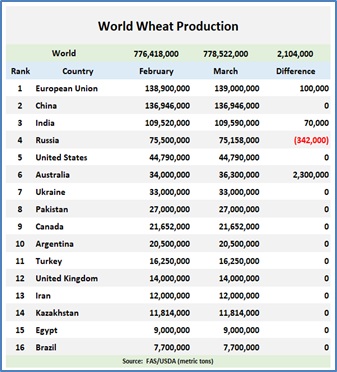 Table 4: World Wheat Production (Ranking By Country), Published on: Mar 22, 2022.
Table 4: World Wheat Production (Ranking By Country), Published on: Mar 22, 2022.
The results of the information contained in these Figures and Tables is that the countries consuming and producing the World’s most pesticides are almost all in the top 42 deadliest coronavirus countries, accounting for 90% of the World’s coronavirus deaths.
Figure 6 summarizes the growth in World production and imports of pesticides from 1940 through 2000 and also shows the size of this business in billions of 1996 US dollars. According to RESEARCHANDMARKETS [16] the market outlook for pesticides global sales in 2023 will be $130 billion, with herbicides gaining $27 billion. This growth is staggering.
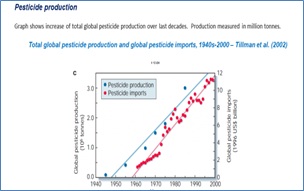 Figure 6: Growth in World Production and Imports of Pesticides from 1940 to 2000.
Figure 6: Growth in World Production and Imports of Pesticides from 1940 to 2000.
In March 2021 Civil Eats published an article [15], summarizing an interview of Anna Lappe with Wolfgang Boedeker, an epidemiologist and board member of Pesticide Action Network – Germany. They cited that pesticide use skyrocketed by 81% over past 35 years. Regions like South America had a 500% increase vs Europe’s 3%. Nearly 300 HHPs are on market, known to be highly toxic to humans, linked to cancer or endocrine disruption or have shown to be particularly damaging to the environment. Counties in the Global South are at highest risk as there are fewer protective measures against exposure. These HHPs are banned for use generally in the Global North.
A paper by Renee Loux in Prevention November 3, 2011 entitled [16] “The Dirty Dozen – Contaminated Foods” reports “FDA and USDA research shows high levels of pesticide and chemicals in these commonly contaminated foods…The "dirty dozen" are the most commonly and highly contaminated foods with pesticides and chemicals, even after washing and peeling. The chemical pesticides detected are known to cause cancer, birth defects, nervous system and brain damage, and developmental problems in children. These foods include beef, pork, poultry, milk, cheese, butter, strawberries, raspberries, cherries, apples, pears, tomatoes, potatoes, spinach, coffee, peaches, nectarines, grapes, celery, red and green peppers [17-21].
An article in SuccessfulFarming August 25, 2020 described a [17] “Sweeping U.S. Pesticide Reform Bill Introduced, Banning Some Chemical Agents. This article indicates that pesticide regulations have not been updated for 25 years during the period of substantial pesticide sales. Health studies during this period have discovered a range of neurodevelopmental effects and have provided overwhelming evidence that pesticide use is causing harm to people and the environment. The USA alone allows use of dozens of pesticides, 1/3 of its total use, banned in the European Union.
Conclusion
This paper has revisited the relationship between pesticide production, application, and use vs World coronavirus deaths at the six million Covid-19 death milestones. From the aspects of global pesticide production to consumption to individual country production and consumption to countries producing the most soybeans and wheat to the products retaining residual pesticides versus World coronavirus deaths, the relationship appears to be critical. Pollution from pesticide use, like pollution from refineries, coal-fired power plants, and diesel transportation on land and sea, during periods of seasonal temperature inversions correlate with the countries and regions experiencing high coronavirus deaths. In fact this paper has shown that 97% of Covid-19 deaths occurred in countries using the most pesticides. All regulatory organizations acknowledge that pesticides are designed to kill and/or maim in order to function, and humans and animals as well as pests are susceptible to these effects. The need to feed the currently 7.9 billion World populations growing to 10 billion by 2057 is a major challenge. The pesticide industry is critical to success and the size of the pesticide industry is staggeringly approaching $130 billion dollars from a tenth of this a generation ago. But regulations have not been adjusted to meet the demands of this staggering pesticide industrial growth. The United Nations and other World Class epidemiologists understand the dilemma of feeding versus ensuring the environmental health of society. 200,000 deaths a year, pre-pandemic, is a horrific price to pay. This paper further suggests that once the full impact of the pandemic is complete in a couple years, the actual coronavirus death toll will be tens of millions and a very large proportion of these will be related with exposure to pesticides.
References
- https://www.worldometers.info/coronavirus
- Craven JS (2021) World’s Coronavirus Death Regions & Why, Parts 1-11, WordPress.com.
- https://pesticidesareaplus.com/index.html?gclid=EAIaIQobChMIrd6znr7N9gIVBk6GCh3KdgGeEAAYByAAEgK9ZvD_BwE
- https://www.worldometers.info/world-population/
- Eric DV (2017) UN Report Estimates Pesticides Kill 200,000 People per Year, World News.
- Kobak K, David A (2022) The pandemic’s true death toll: Millions more than official counts. Nature 601: 1-5.
- Craven JS (2022) World’s Coronavirus Death Regions & Why, East-Central Europe -World’s Deadliest Coronavirus Region. Archives of Community Medicine and Public Health 2455-5479.
- Craven JS (2022) Lands Abutting Seas, Oceans, 85% of World’s Covid-19 Deaths World’s Coronavirus Death Regions & Why 3: 1-10.
- Comunian S, Dongo D, Milani C, Palestini P (2020) Air Pollution and COVID-19: The Role of Particulate Matter in the Spread and Increase of COVID-19’s Morbidity and Mortality. Int J Environ Res Public Health 17: 4487.
- Shi-Yan R, Wen-Biao W, Ya-Guang H, Hao-Ran Z, Zhi-Chao W, et al. (2020) Stability and infectivity of coronaviruses in inanimate environments. World J Clin Cases 8: 1391-1399.
- https://www.fao.org/faostat/en/#home
- Nancy L (2021) Pesticide Exposure and COVID-19 Susceptibility. ASBMBToday.
- Much Higher Rates of Covid-19 Deaths in Farm Workers May Be Enhanced by Pesticide Exposure, Beyond Pesticides, July 29, 2020.
- https://www.ccohs.ca/oshanswers/chemicals/pesticides/general.html
- Anna L, (2011) New Study Shows the Growing Risks of Pesticide Poisonings. Civil Eats
- Loux, Renee, “The Dirty Dozen-Contaminated Foods”, Prevention, Nov 3, 2011.
- Liza G (2020) Sweeping U.S. Pesticide Reform Bill Introduced, Banning Some Chemical Agents. SuccessfulFarming
- https://www.fao.org/faostat/en/#home
- Maryland Department of Agriculture (2022) Consumer Information Regarding Tree, Shrub, and Lawn Care Pesticide Applications.
- https://www.globenewswire.com/news-release/2020/01/17/1971860/0/en/Pesticides-Global-Market-Opportunities-And-Strategies-To-2023.html
- John N, Hofman V, Solseng E (2017) Reducing Spray Drift (AE1210), North Dakota State University.
Appendix A
Pesticides - General
[9] Canadian Centre for Occupational Health & Safety, Pesticides General OSH Answers
© Copyright 1997-2022, date modified: 2022-03-17.
How do pesticides "work"?
Pesticides are often grouped into "families" because they share similar chemical properties, or they act on the pest in the same way. A pesticide product may have active ingredients from more than one chemical family.
Some common families include:
Organophosphates
Characteristics
There are several types of pesticides in this family, depending on the exact chemicals used.
- Usually made from phosphoric acid.
- Most organophosphates are insecticides. They control pests by acting on the nervous system (for example, the pesticide interferes with nerve-impulse transmissions by disrupting the enzyme (cholinesterase) that regulates acetylcholine (a neurotransmitter)).
- With a few exceptions, most are highly toxic.
- Organophosphates are used because they are less persistent (breakdown faster) in soil, food or feed for animals than other families, such as organochlorine pesticides. However many are being phased-out or used only in critical applications.
Examples
- chlorpyrifos
- dimethoate
- fenthion
- malathion
- naled
- temephos
- trichlorfon
Organochlorines (Chlorinated Hydrocarbons)
Characteristics
- Controls pests by disrupting nerve-impulse transmission (disrupts ion flow at the axon/synapse level).
- Generally persistent in soil, food, and in human and animal bodies (does not breakdown quickly).
- They can accumulate in fatty tissues.
- Traditionally used for insect and mite control, but many are no longer used due to their ability to remain in the environment for a long time.
Examples
- aldrin
- chlordane
- dieldrin
- endolsulfan (use not permitted after December 31, 2016)
- endrin
Carbamates and Thiocarbamates
Characteristics
- Made from carbamic acid.
- Control pests by acting on the nervous system (interfere with nerve-impulse transmission by disrupting the enzyme (cholinesterase) that regulates acetylcholine (a neurotransmitter).
- In general, are less persistent in the environment than the organochlorine family.
- Includes insecticides, herbicides and fungicides.
- The health hazard to humans and animals is mild with herbicides and fungicides, while greater with insecticides.
Examples
- Insecticides
- Carbaryl (Banned in European countries, only certain uses will be cancelled in Canada due to concerns of health risks)
- Propoxur (some uses of this insecticide, such as control of mosquitoes, black flies, all indoor use except bait trays, are to be phased out in Canada)
- Methomyl (in Canada some uses are proposed to be cancelled)
- Carbofuran (limited use in Canada)
- thiodicarb
- Herbicides
- barban
- EPTC
- propham
- triallate
- Fungicides
- Nabam
Pyrethroids (synthetic)
Characteristics
- Disrupts nerve-impulse transmission, (increases sodium ion flow into axon), which stimulate nerve cells and eventually causes paralysis.
- Stable in sunlight (do not degrade quickly).
Examples
- Cyhalothrin*
- Cypermethrin*
- Deltamethrin*
- esfenvalerate
- permethrin*
*under review at the time of publication of this document
What are different forms of pesticides?
Pesticides are formulated (prepared) in liquid, solid and gaseous forms.
- Liquid formulations include suspensions (flowables), solutions, emulsifiable concentrates, microencapsulated suspensions, and aerosols.
- Solid formulations include dusts, particulates, granulars, pellets, soluble granules, soluble powders, baits, tablets, dry flowables and wettable powders.
- Gaseous pesticides are typically fumigants (can be sold as liquids or gases).
- Abbreviations are often used with the trade name on the pesticide label to indicate the type of formulation. Some examples of words and abbreviations used for pesticide label formulation statements are:
D - Dust or Powder
DF - Dry Flowable
E or E C - Emulsifiable Concentrate
F - Flowable
G - Granular
P - Pellet
S - Solution
SC - Sprayable Concentrate
SP - Soluble Powder
WDG - Water Dispersible Granules
WP - Wettable Powder
WS - Water Soluble Concentrate
Adapted from: Grower Pesticide Safety Course Manual, Chapter 5 - Pesticide Formulations, Ontario Pesticide Education Program, University of Guelph Ridgetown Campus.
It is important to know what form the pesticide is in because the form can have an impact on how hazardous the chemical may be. For example, your skin absorbs liquids more easily than powders. In some cases, formulations such as emulsifiable concentrates may be more easily absorbed than water solutions. In addition, adjuvants (a chemical added to a pesticide to increase its effect) may be added to a spray solution. Some adjuvants may increase amount of pesticide that spreads onto or sticks to your skin, and the amount that is absorbed through your skin.
What is an inert ingredient?
A formulation will consist of one or more active ingredients plus "inert ingredients" (materials with no pesticide action). Inert ingredients are used for many reasons, including making the pesticide more convenient to use, or enhancing its effectiveness. Even though these inert ingredients will usually be the largest ingredients (for example, by percentage), they are often not listed on the label.
NOTE! The word "inert" does NOT mean that the ingredient is harmless. An "inert" ingredient can be more hazardous to workers than the active (pesticide) ingredient itself. Information on hazardous ingredients in a pesticide formulation can be found in the Safety Data Sheet (SDS) for the product
Can pesticides be harmful to humans?
Yes, they can be. Because pesticides are designed to "kill", they can also affect humans or animals (such as family pets). Please see the OSH Answers document Pesticides - Health Effects for more information.
You must work with and store pesticides properly. The importance of reading the label and following instructions carefully cannot be overemphasized. Please see the OSH Answers document Pesticides - Working Safely for more information.
How do pesticide laws work?
Canadian pesticide use is regulated through a system shared by federal, provincial and municipal governments. Together, these three levels of government oversee various acts, regulations, guidelines, directives and bylaws. At all levels, however, regulators are working together towards the common goal of helping to protect Canadians from any risks posed by pesticides and ensuring that pest control products do what is claimed on the label.
The federal government evaluates and registers pesticides through the Pest Control Products Act (PCPA) and Regulations, which is enforced by the Pest Management Regulatory Agency (PMRA). All pesticides must be registered to be imported into, or sold or used in Canada. For more information, refer to the Pest Management Regulatory Agency. The registration is systematically re-evaluated (every 15 years) on the basis of new available data regarding environmental and human health risks. Based on the assessment, the pesticide can be phased-out or removed from the Canadian market; its use may be restricted for certain applications or other measures may be taken to increase the level of protection (e.g. modification of maximum residue limits and the label information). See the Health Canada Re-evaluation Work Plan 2015-2020.
Provincial and Territorial governments are responsible for the sale, use, storage, transportation and disposal of registered pesticides, as well as training, certification and licensing of applicators, vendors and growers within their province/territory. Provincial and territorial governments are also responsible for issuing permits, responding to spills and accidents and the classification of pesticides for sale and use within their province/territory. Note that in most provinces/territories, anyone who sells or applies pesticides must be trained and certified - consult your local Ministry of Agriculture and/or Ministry of Environment for certification details. For more information, please consult the Consumer Product Safety section of the Health Canada web site.
Municipal / Local governments set bylaws for municipal (and often includes private and residential) lands regarding the use of pesticides. For example, many municipalities have banned the "cosmetic use" of pesticides (lawn, turf and garden pesticides used primarily to make a lawn/garden look more attractive). Before you apply any pesticide to your private property, check your local by-laws to see what products, if any, are allowed.
Appendix B
[15] Consumer Information Regarding Tree and Lawn Pesticide Applications
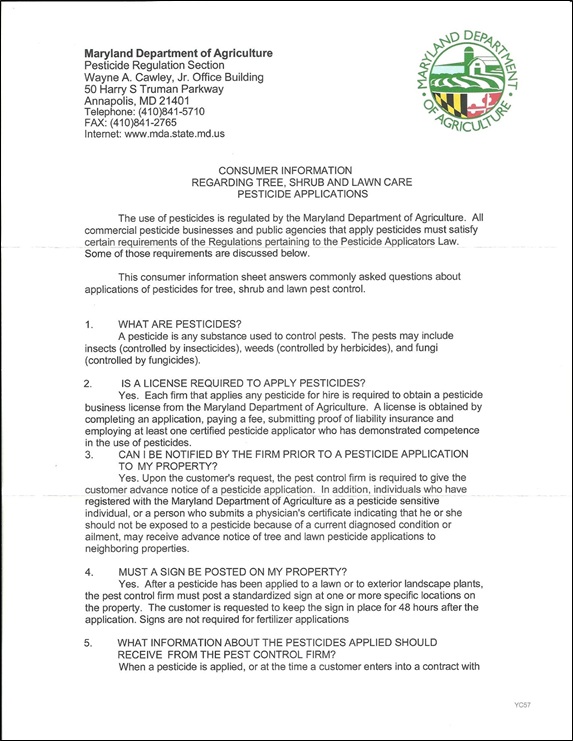
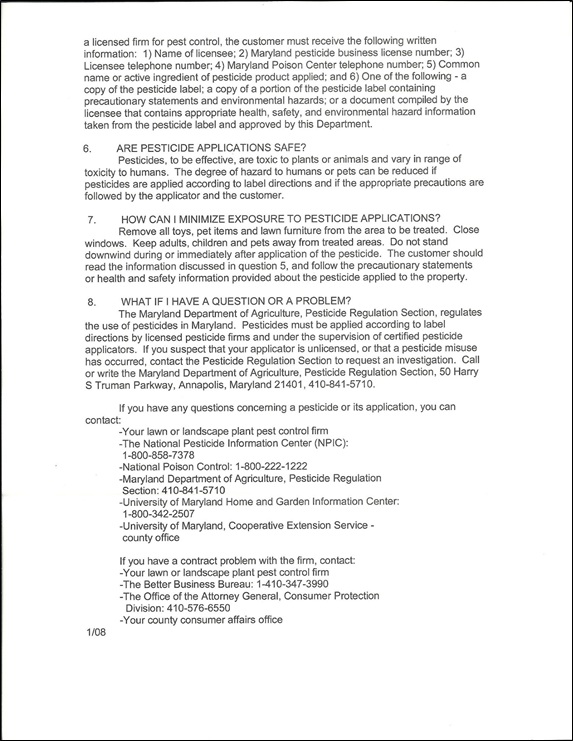
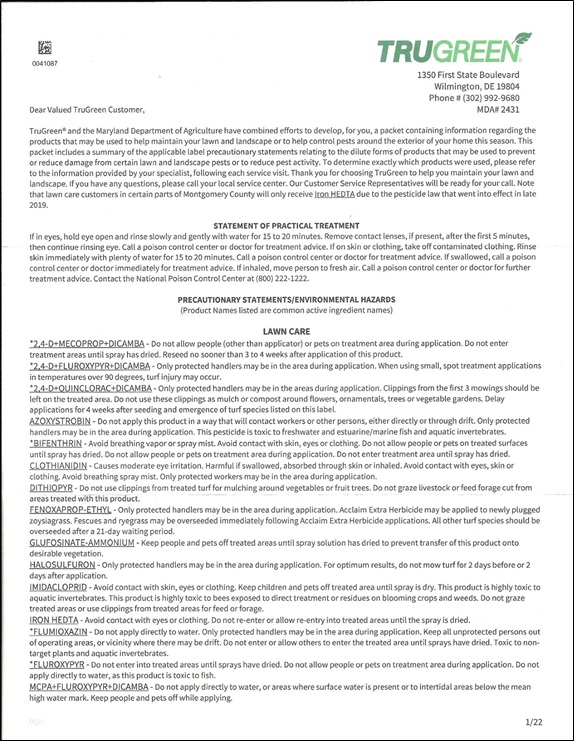
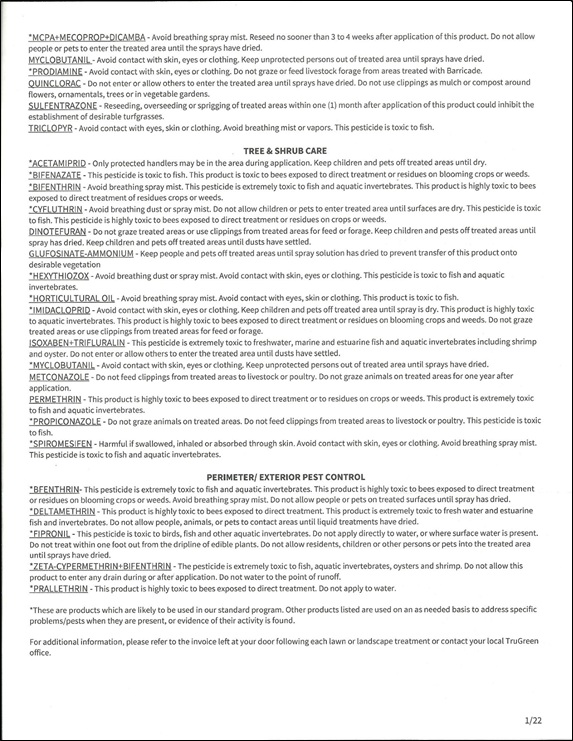
Citation: Craven JS (2022) Pesticides and World Covid-19 Deaths. J Community Med Public Health Care 9: 103.
Copyright: © 2022 Craven JS, et al. This is an open-access article distributed under the terms of the Creative Commons Attribution License, which permits unrestricted use, distribution, and reproduction in any medium, provided the original author and source are credited.

